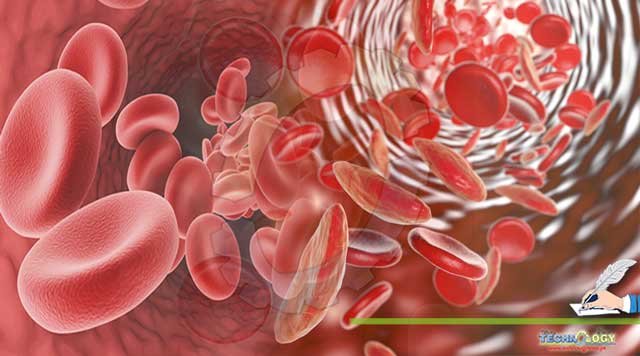The inborn blood problem in which normal hemoglobin is not formed in body, called as thalassemia. It is transferred from parents to children.

By Zartasha Jabeen, Fatima Sheraz,Huma Riaz
1.Introduction:
Normal hemoglobin takes the sufficient amount of oxygen to all the body cells. It is present in red blood cells in the form of protein. When there is occurrence of any single transformation in protein chain of hemoglobin, it becomes unable to carry oxygen. Due to irregularity in protein chain the red blood cells undergo the self-destruction process. The apoptosis of cells leads to less number of mature functional cells. This results in deficiency of red blood cells, condition known as anemia. In case of anemia body carries less number of blood cells then the normal state. Affected person have sufficient ability to produce cells but they are unable to get mature.
These consequences lead to thalassemia. It is an inherited disease which transfers from affected carrier parents to children. The cause of the disease is the alteration at genes level. This alteration may be due to deletion or the addition at specified points in the genes. These genes have basic role to play in body but due to changes in sequence they lost the ability to perform their duty.
2.Risk factors:
Three are following factors that increase the risk of thalassemia:
- Thalassemia transfers from parents into the children due to mutation in haemoglobin gene.
- People living in Africans Americans, South Asia and Mediterranean are more prone to this disease.
3.Different types of thalassemia:
There are two types of thalassemia, alpha thalassemia and beta thalassemia. Beta thalassemia is more common than alpha thalassemia, beta thalassemia major is more focused in therapeutically point of view.
3.1: Alpha thalassemia:
Cluster of Alpha goblins gene has approximately 30kb length on chromosome 16 that is actually inherited by four gene loci. Alpha hemoglobin chain is made of four different genes; two of these muted genes could be inherited from each parent.
3.2: Beta thalassemia:
These disorders result due to decrease or totally absent synthesis of beta goblins chain, lower level of erythrocyte hemoglobin, lower synthesis of the erythrocytes as well as anemia. There are three types of Beta thalassemia.
4.Complications:
The most expected complications include in the moderate as well as in severe thalassemia are following:
4.1: Excessive Iron:
Patients of thalassemia can attain a large amount of iron in bodies that result in heart damage, damage to endocrine system.
4.2: Infection:
Patients of thalassemia are at the greater risk of infection.
4.3: Bone deformities:
Thalassemia expands the bone marrow of patients. Which eventually widens your bones.
4.4: Enlarged spleen:
Thalassemia is mostly accompanied by the deterioration of a very large number of the red blood cells that causes enlargement in spleen size.
4.5: Affected growth rates:
Anaemia also delays the puberty. It also slows down the growth of the children.
4.6: Heart problems:
Aabnormality in the heart rhythms and Congestive failure of the heart can be associated with the severe type of thalassemia.
5.Diagnosis:
In past, DNA blotting was performed for the purpose of analysis but currently the preferred technique is the use of Polymerase Chain Reaction and the gap-PCR is preferred. Another methodology which is used for the detection of such deletions is the use of multiple ligation -dependent probe implication (MLPA). Sanger sequencing method is also the most appropriate method for the detection of changes or mutations which occur without deletion and allele -specific PCR technique is also implication for the analysis of mutations in a-thalassemia’s other techniques are the reverse dot-blot method.
6.Treatment:
Various types of treatments involved in case of thalassemia are involved but the mostly practiced is the Blood transfusion therapy. The patient is subjected to blood transfusions to stay alive. It causes an immediate increase in the uptake of iron to the body which can damage the liver, heart and other major body organs. This treatment is followed when patients are suffering from severe condition. As the life span of erythrocytes is only one-twenty days so the blood is donated to the body of patients at several times.
7.Symptoms:
Symptoms include weakness, pale colour of skin, dark urine, increase heart rate, loss in weight, and sometimes blood in urine.
8.Conclusion:
Mild type of thalassemia does not cause any severe type of signs. The severe type of thalassemia patients has appeared with indications.
9.Bibliography:
www.mayoclinic.org
www.healthline.com